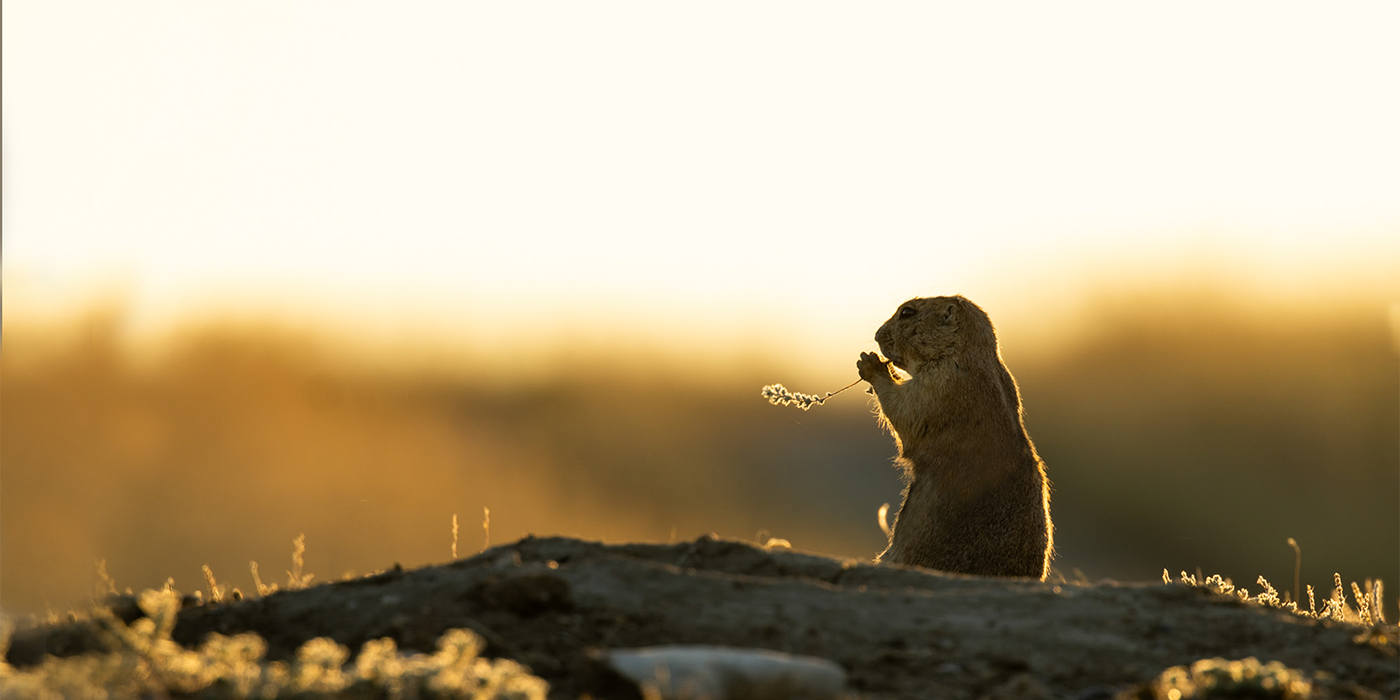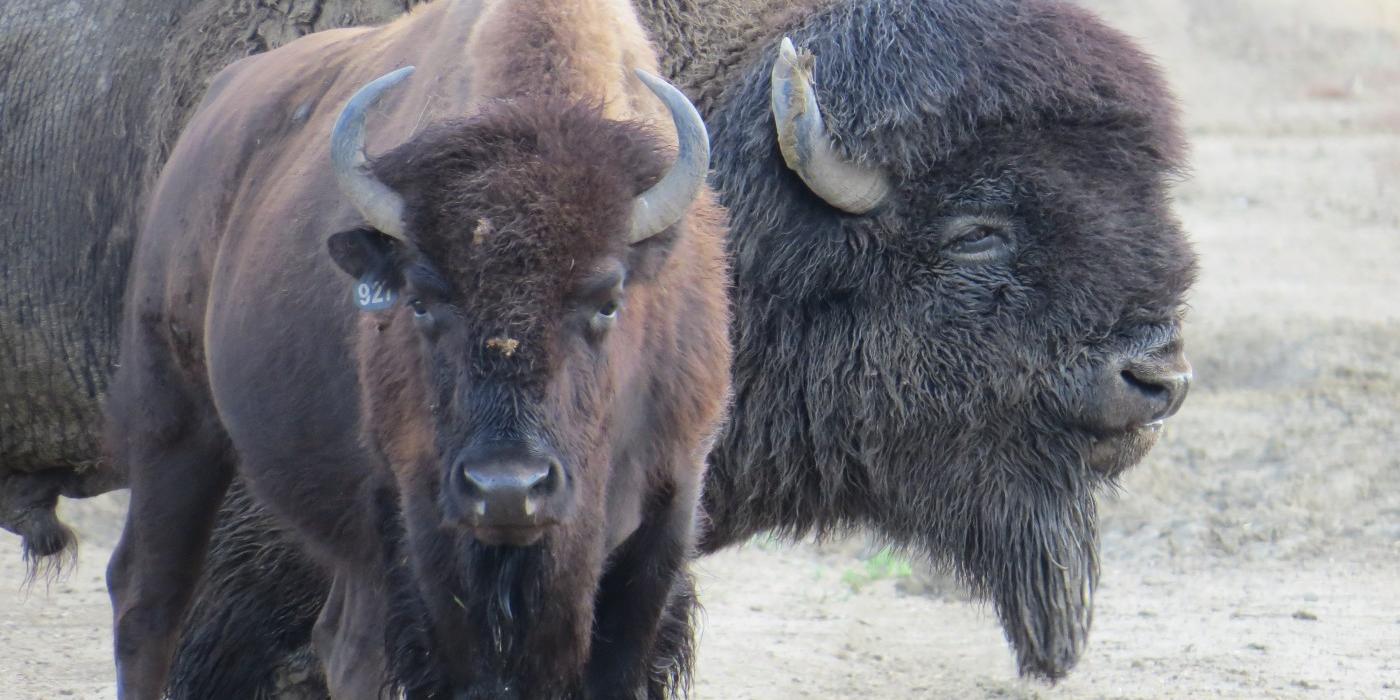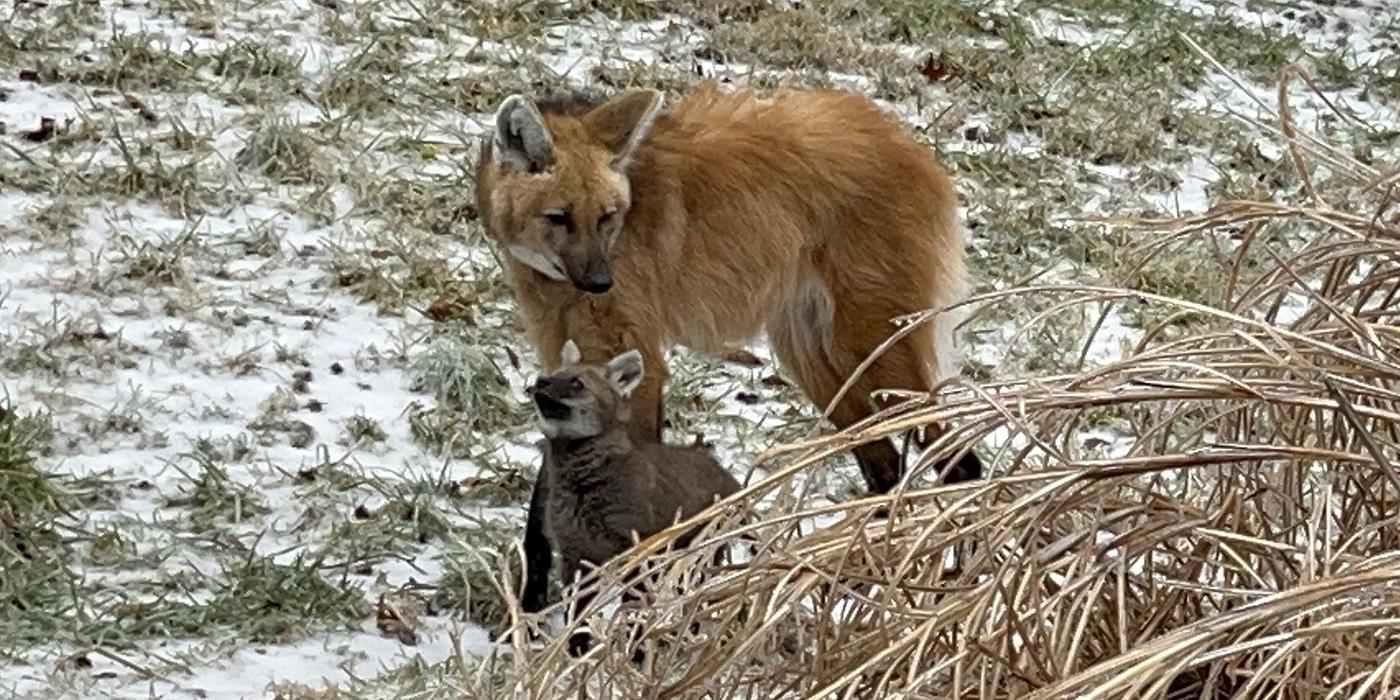Heights Unseen: The Hidden World of Tropical Rainforests
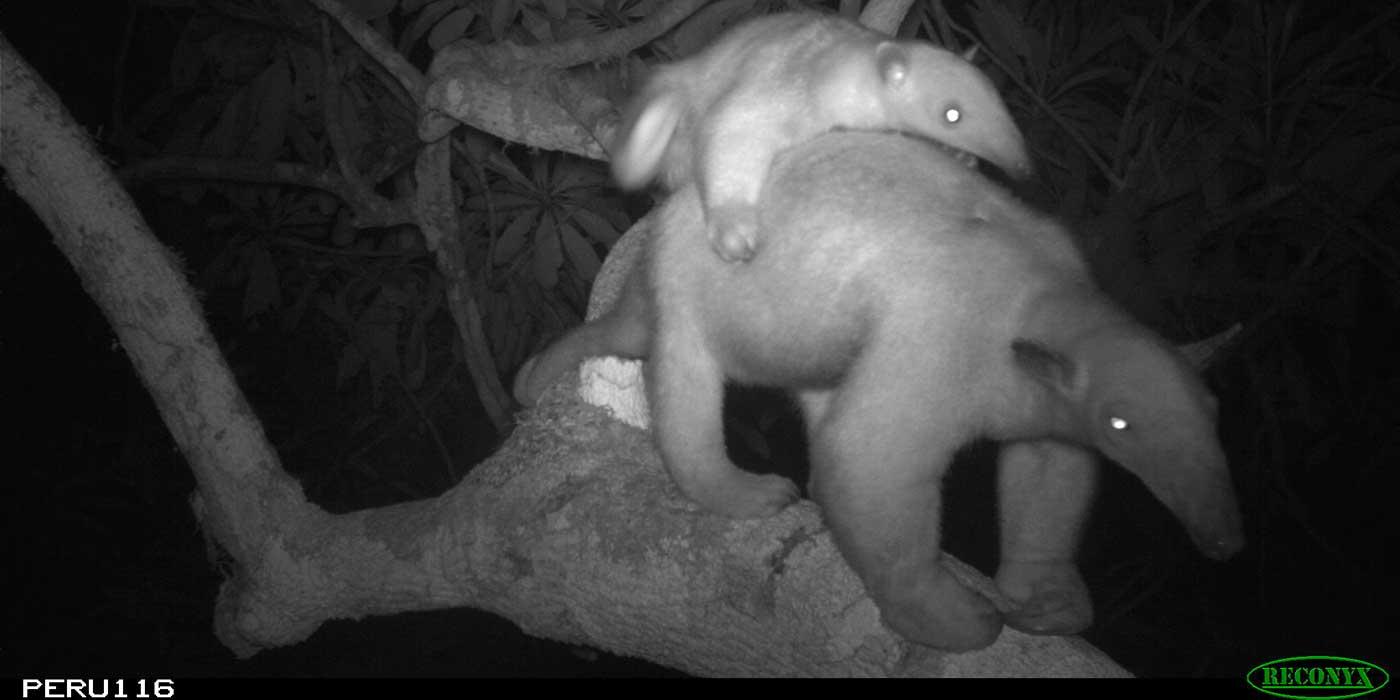
A hundred feet above the forest floor and dense with leaves and plants, the rainforest canopy is a challenging place to study. It’s hard to observe from the ground and difficult for researchers to access, so conservation biologist Tremie Gregory learned to climb trees.
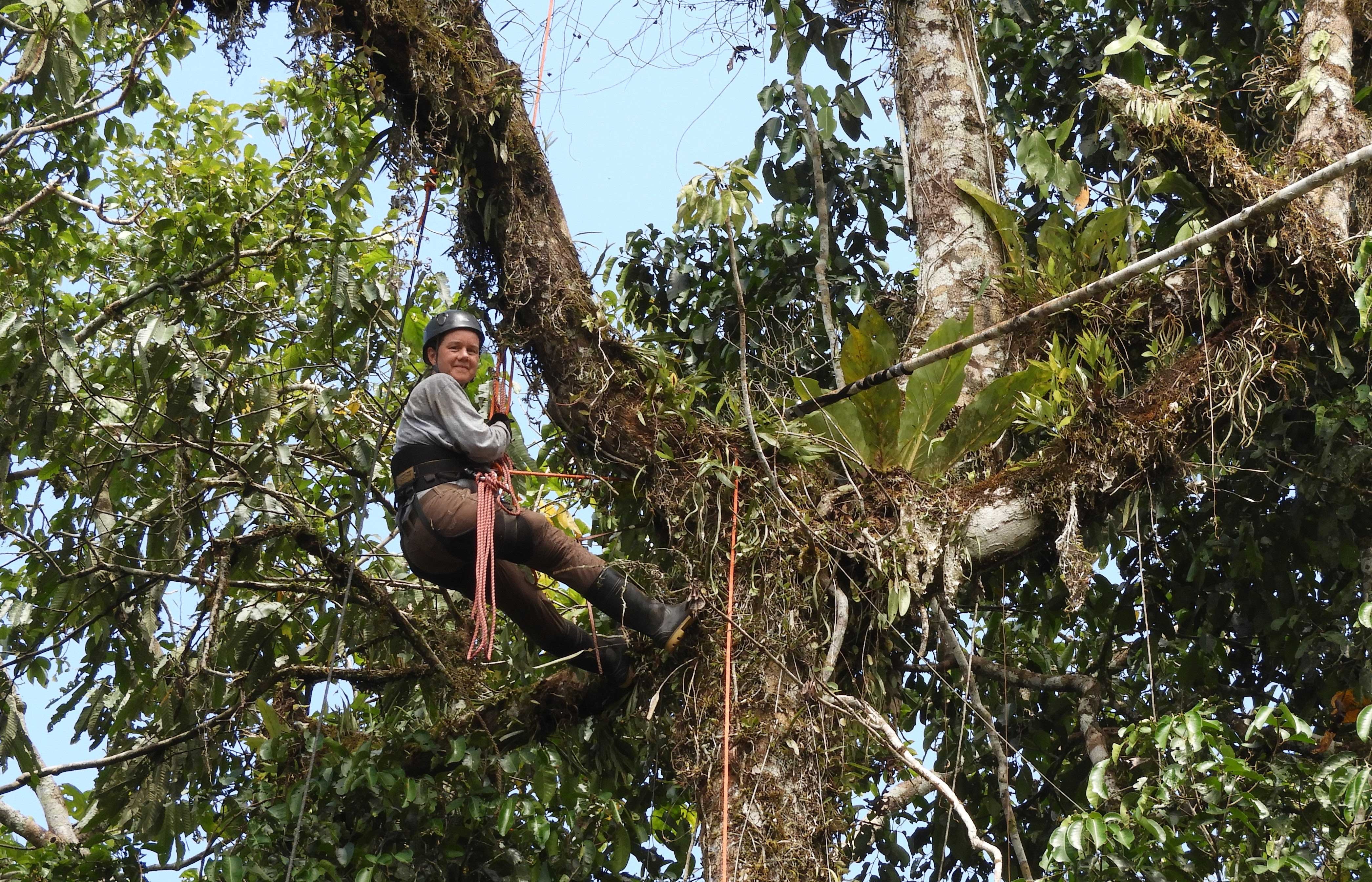
In the Peruvian Amazon, Gregory tests strategies that can help protect wildlife impacted by pipelines and other major projects. Her research focuses on animals that live almost exclusively in treetops, such as monkeys, kinkajous and opossums. Few people get to experience the tropical forest canopy firsthand. “It’s so multidimensional. There’s life springing out of every tree hole and every leaf,” says Gregory.
Species that occupy this part of the forest rarely visit the ground. Instead, they rely on connecting branches to navigate from tree to tree. These treetop pathways can be knocked down when trees are cleared for roads and pipelines. When they disappear, animals that live in the canopy lose access to parts of their territories.
“Animals know the areas they live in really well,” Gregory explains, “It’s like how we know where the grocery store is, where the drug store is, where we go to work.” Some monkey species, for example, revisit the same fruiting trees year after year to feed. When an animal gets cut off from its usual food source, it has to search for another. That takes time and energy, and it can lead to conflict among groups that must resort to competing for resources in a smaller area. Animals can also lose access to rare resources, such as salt and clay licks where they get minerals, trees where they sleep, and even potential mates.
But what if some of the treetop pathways that cross over pipeline clearings could be left intact, forming what Gregory calls “natural bridges”? With an altered landscape and fewer branches, would animals still use the bridges? Determined to find out, Gregory got to work on a new strategy of observing species that rarely step foot on the ground.
Repurposing the Camera Trap
She first considered tracking individual monkeys using radio collars to see if they would use the bridges, but ultimately ruled that out. Using radio collars to track animals is a common practice, but catching and collaring monkeys would not be easy. Researchers would first need to locate the monkeys in the canopy and then dart them to safely attach the collars. If that was successful, the data would still only reveal the use of the bridges by those few monkeys. Gregory wanted a full picture of how many different animals would use them to cross a pipeline clearing.
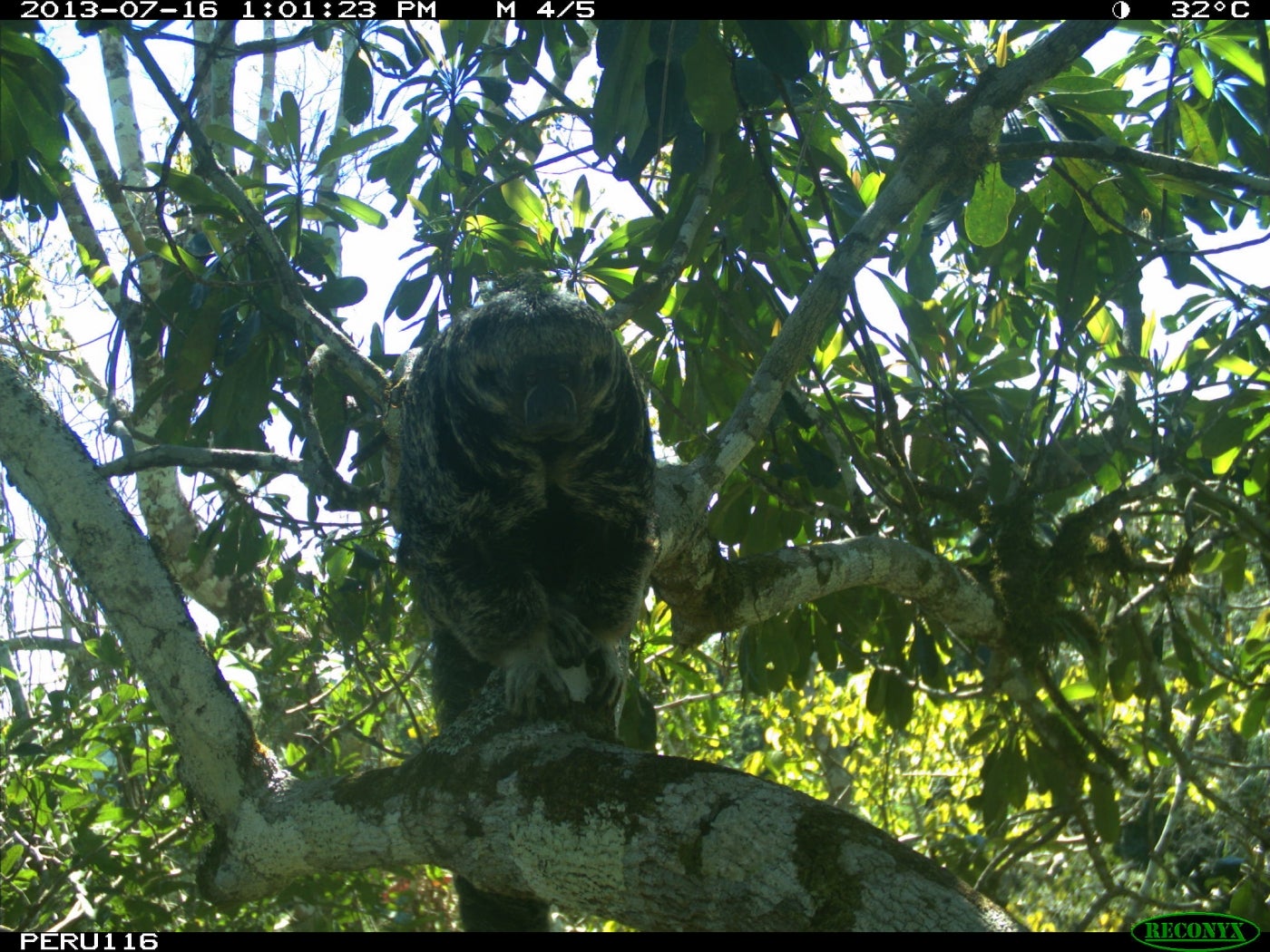
She found a previous study where researchers sat under natural bridges for 10 hours a day and recorded the animals they saw, but this too had its drawbacks. It seemed challenging to ask anyone to sit in the rainforest and monitor a single spot for hours at a time. It would also be difficult for a person on the ground to observe what was happening hundreds of feet above — and almost impossible at night.
Eventually, Gregory and her team settled on using camera traps. A camera trap is a small device that snaps a photo when its infrared sensor is triggered. The sensor can “see” when an animal passes in front of the camera because of the heat coming from the animal’s body. When it moves in front the sensor, the camera takes a series of photos.
Camera traps had been used on the ground for decades, but at the time, a large-scale study with cameras placed high in the rainforest canopy had never been attempted. It introduced a new set of obstacles. How do you get a camera onto a tree branch 100 feet above the ground? How do you select the right branch? Will the technology stand up to the humidity, rain and heat of the rainforest? How will animals react?
Gregory was determined to make it work. She and her colleague Farah Carrasco Rueda, a conservation biologist, flew to Panama for a tree-climbing course, where they learned how to safely navigate the canopy. She even enlisted her dad’s wisdom. Traditional camera trap mounts are intended for use on the ground, where cameras can be attached to tree trunks. That same setup won’t work high up in the trees. So, Gregory and her dad designed and built a new mount that could securely attach to a branch.
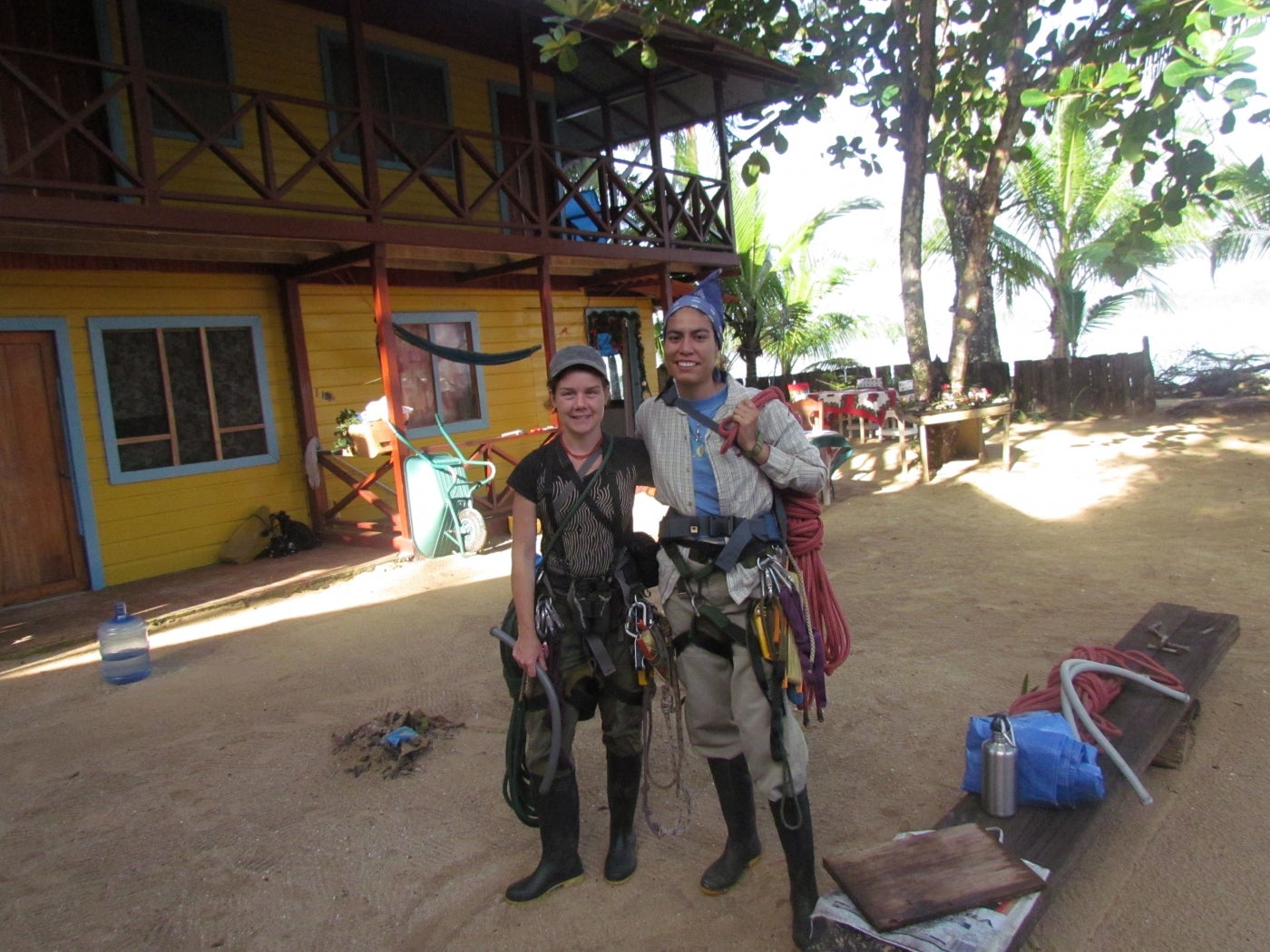
After nearly 18 months of careful planning, Gregory and her team were ready to test their method in the field. Construction of a new pipeline was scheduled to begin in April 2012, and the construction company agreed to preserve a set of natural bridges for them to study.
The research team consisted of Gregory, Carrasco Rueda, local indigenous community members and first aid nurses. They often built their own field camps, so sometimes a cook, a safety officer, and on at least one trip, a lighting-rod installer joined the crew. They planned to set up camera traps in 13 bridges and hope to see animals crossing. They would also place some camera traps on the ground for comparison.
Climbing into the Canopy
Setting up camera traps in the canopy is arduous work. On some expeditions, team members carried 50 pounds of equipment over miles of hilly, muddy terrain just to reach a set of study trees. They used a gigantic slingshot to send a weight attached to a string up, up, up into the canopy. If everything went as planned, the weight would swing over the target branch and slide back down to the ground where they could use it to set up a climbing rope. That process alone could take three to four hours.
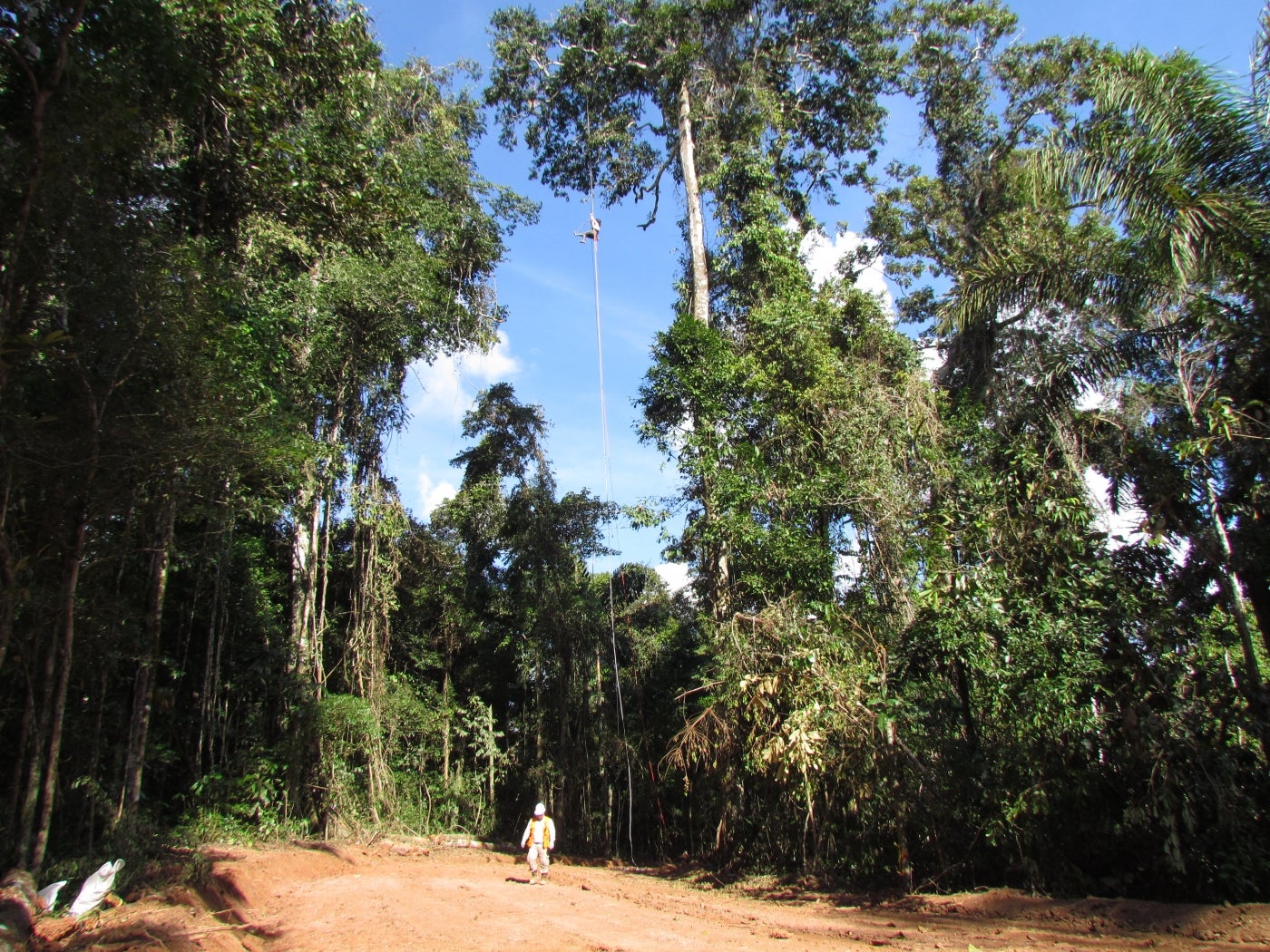
The team also had to remember to keep their wits about them in the canopy, where there are ants, wasps, and other pesky, potentially dangerous distractions. Stingless bees would sometimes gather and find their way under a climber’s mosquito head-net. “You start to get really flustered and tired and sweaty,” explains Gregory. “You don’t want to drop the camera down 100 feet, so it’s really important to take a deep breath, gather your patience and keep a clear head.”
A lot can go wrong in field research, so Gregory emphasized using checklists. Did you turn the camera on? Did you test the sensor and check the photos to make sure it’s pointed at the right branch? Did you remember to replace the memory card? Still, there were some hiccups the team couldn’t anticipate, like mischievous porcupines forcing cameras open. “We’d get up there and months of data would be lost, because the camera would be flooded with water,” says Gregory.
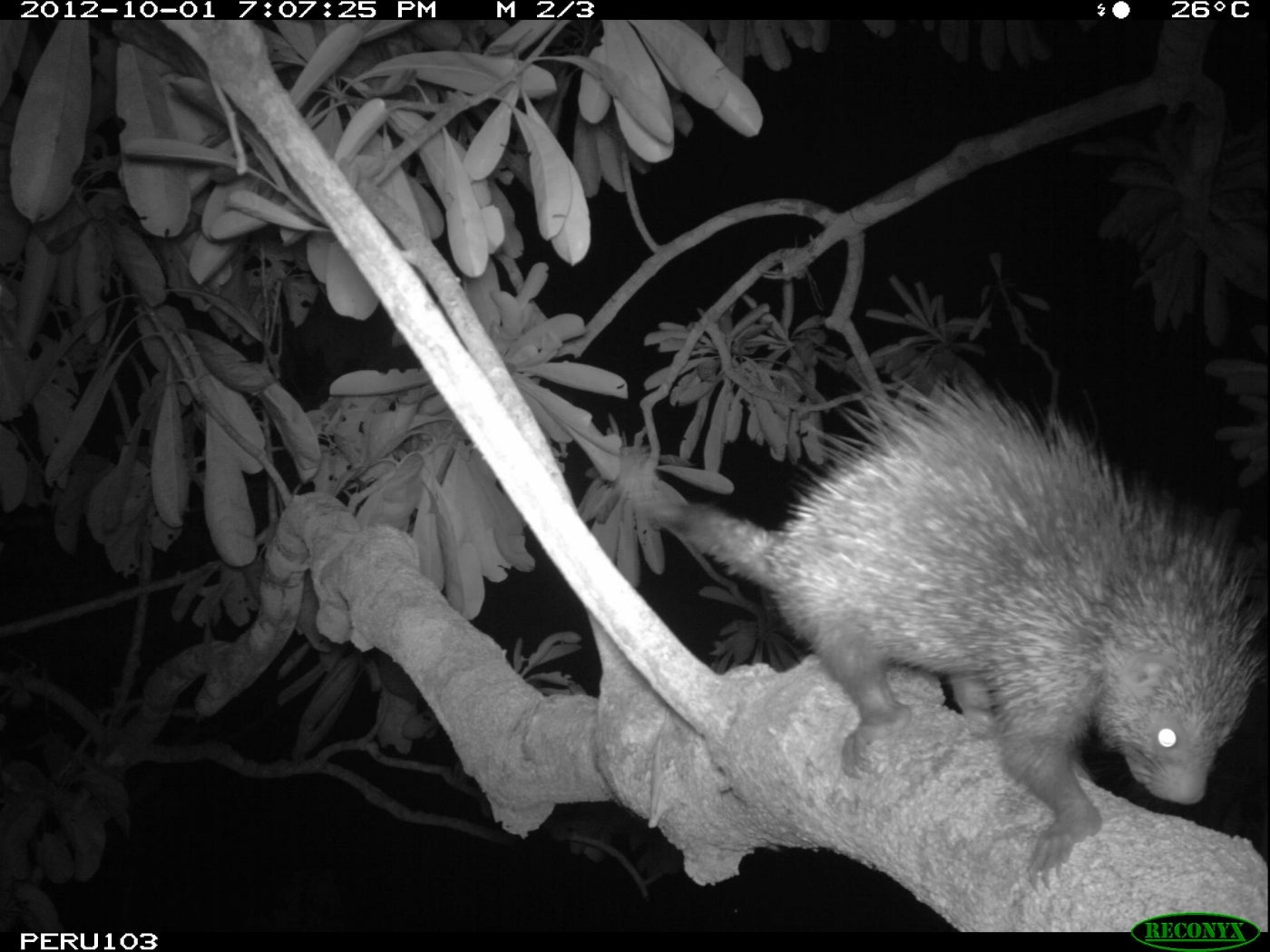
They also learned that warm leaves could blow around in the windy canopy and trigger a camera, filling a memory card with thousands of unusable photos. So, they made it a practice to start clearing the leaves in front of each camera trap.
Gregory had set out to learn whether preserving some natural bridges over pipeline clearings would give animals to continued access to their home ranges. Even with many months of planning and weeks spent setting up camera traps, she wasn’t sure it would work. “Any time you use a new method, there’s a chance for failure,” she says, “but what’s interesting about science is that if you design a question properly, even if you don’t get the response that you expected, it will still be informative.”
Luckily, not only did animals use the bridges — they crossed 200 times more frequently over branches than they did on the ground. That surprised even her. The team documented 25 species and more than 3,100 crossings in the canopy, but just 16 crossings on the ground.
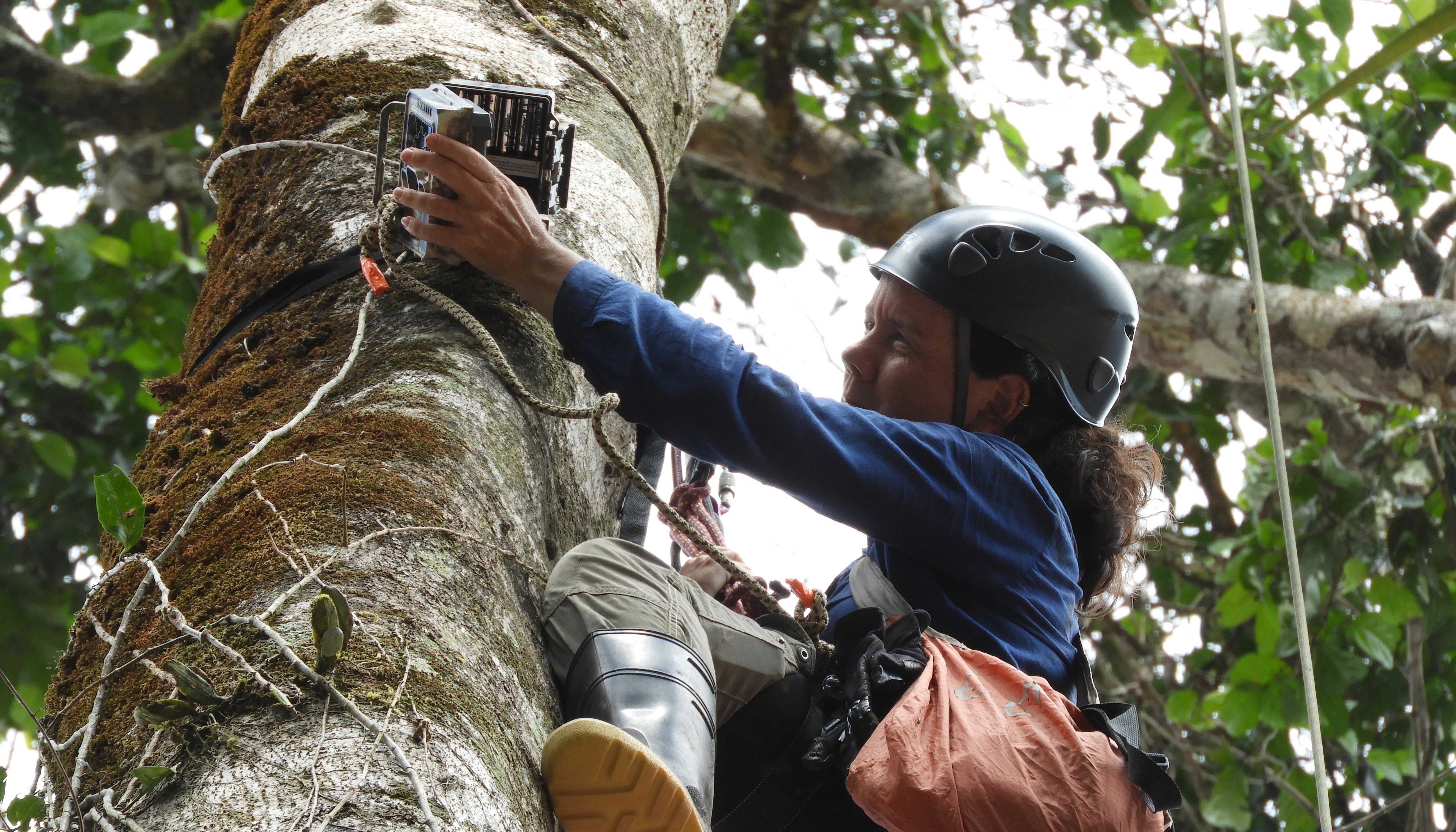
Picture This
The team returned to the rainforest to collect memory cards from cameras and review photos every few months. Sometimes, they could identify individual animals based on markings or injuries. They saw animals with scarring, broken bones, bot fly infections and even a one-eyed kinkajou.
Photos also showed animals grooming each other, making threatening faces, eating and possibly even mating. They also frequently captured animal families crossing bridges together. A tamandua already carrying a big baby on her back appeared to be pregnant in one image. In another, an olingo held its offspring in its mouth to carry it safely across the branches.
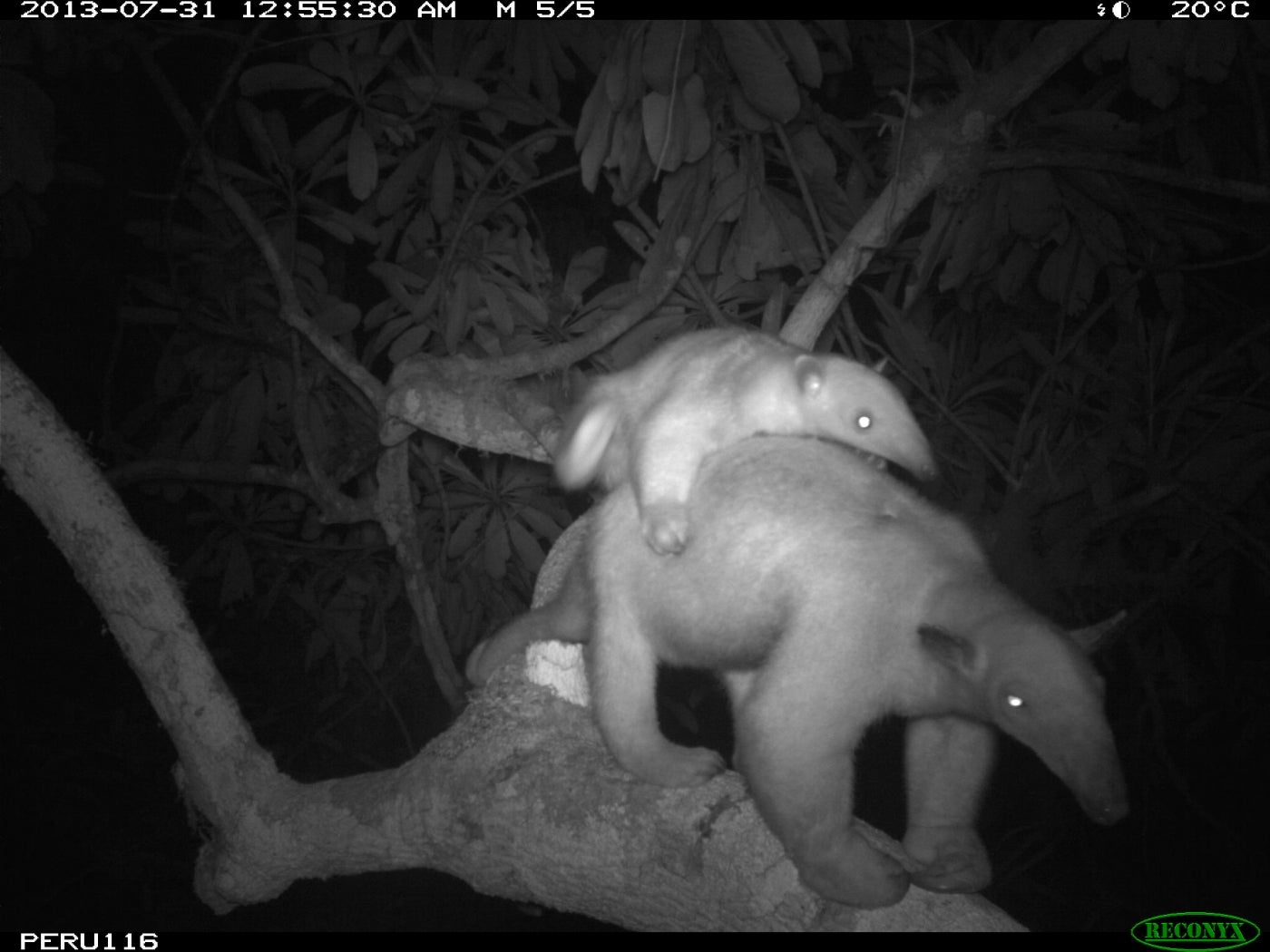
A series of photos showed a group of night monkeys crossing with their babies, too. Over time, researchers could see the infants getting bigger and bigger — first hanging on to the belly of a parent, then riding on their back, and eventually growing big enough to follow behind on their own.
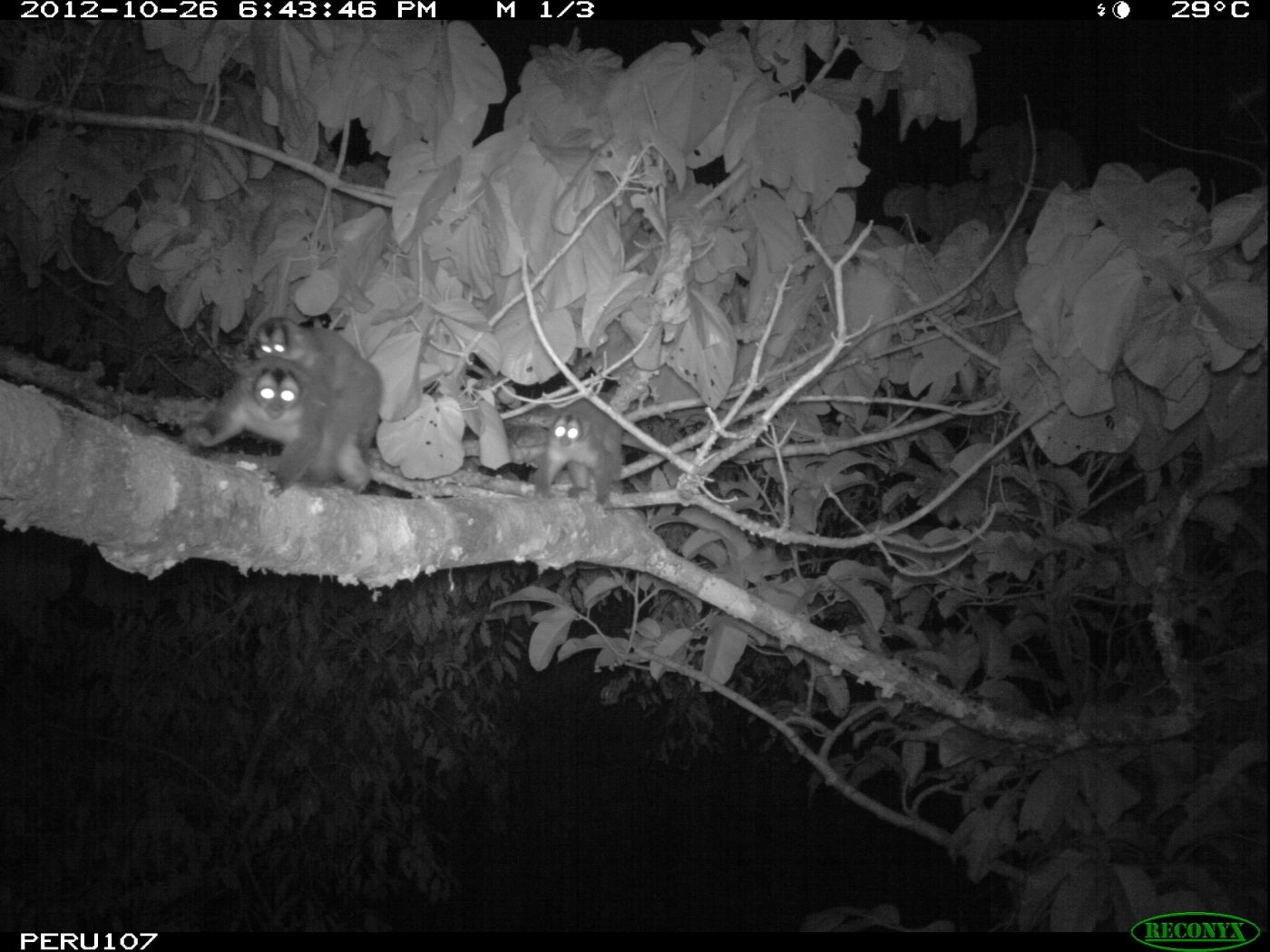
They counted more reptiles than they thought the cameras would capture, including a species called Uracentron flaviceps — a lizard scientists don’t know much about because it can spend its entire life very high up in a single tree. The camera traps even caught a few photos of owls and other birds.
The research team shared the photos they collected with everyone involved, including the pipeline construction teams. “I always felt like it was important to share our results with the people engaged in the construction process, because they were the ones leaving the canopy bridges and they were the ones that really were making conservation choices every day,” says Gregory.
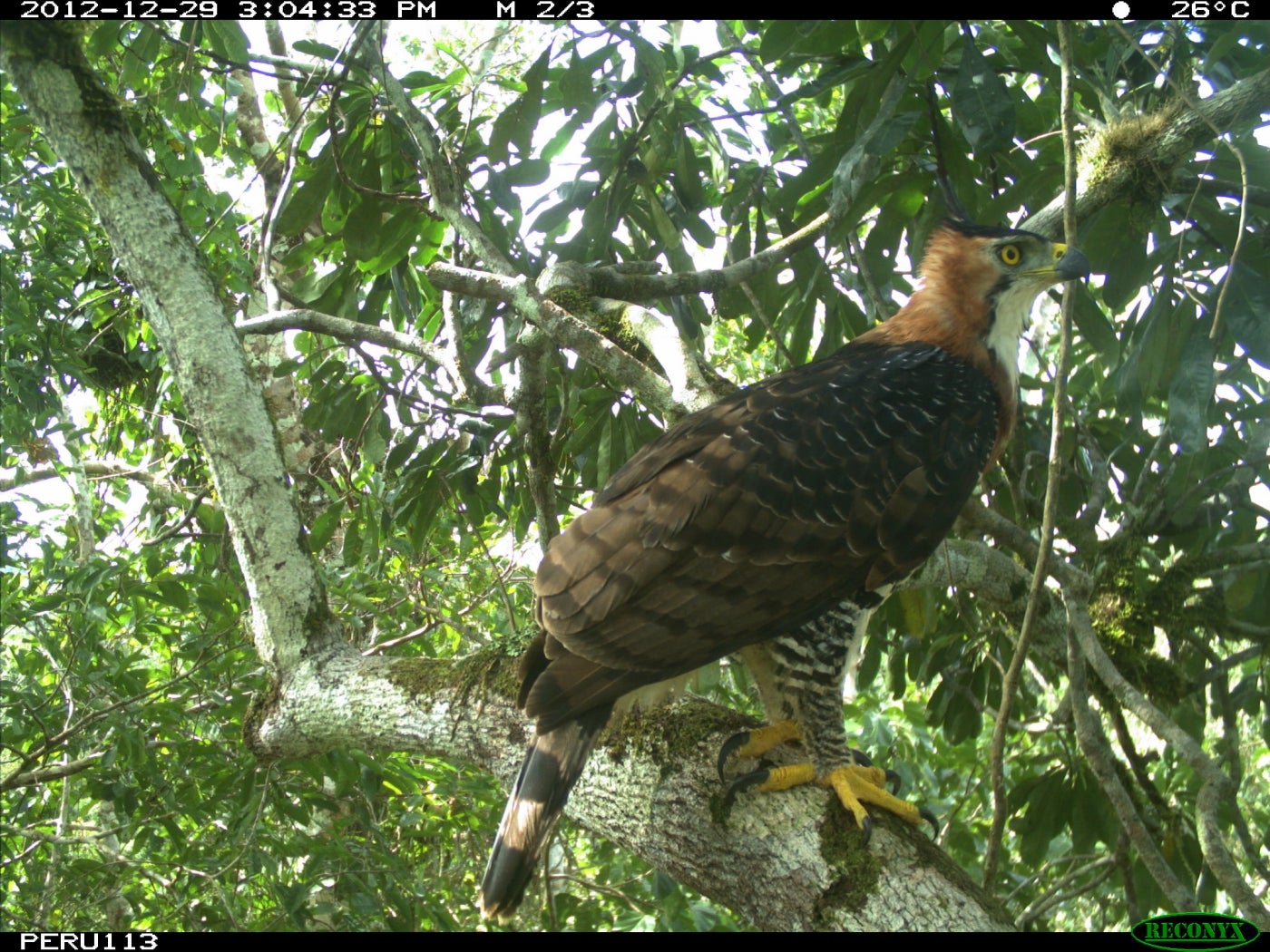
The study took years to develop and was only possible because of collaborations with fellow researchers, pipeline developers and the local community. With ingenuity, grit and a lot of patience, the work paid off. The research showed that preserving even a few natural bridges over a pipeline can prevent animals from becoming restricted to parts of the rainforest.
The data also revealed more about the elusive animals that live in the canopy, such as their health, infant development, group size and behavior. The collection can continue to be used for generations to come. A couple of similar studies took place around the same time as Gregory’s, further demonstrating that camera traps are an effective tool for studying the tropical forest canopy. Since then, the field of canopy camera trapping has taken off. Dozens of projects around the world are now using camera traps in treetops, and the information they uncover is painting a clearer picture of life in the canopy.
Soon after publishing the results from their first study, Gregory and her colleagues at the Smithsonian Conservation Biology Institute followed it with another. In their next study, they plan to place camera traps in branches over a pipeline before and after it’s completed, to see how the use of natural bridges changes over time. They also plan to add video to future research, so they can learn even more about the Peruvian rainforest’s arboreal animals.

